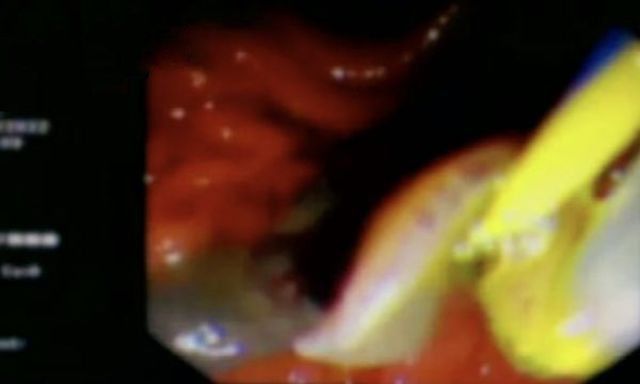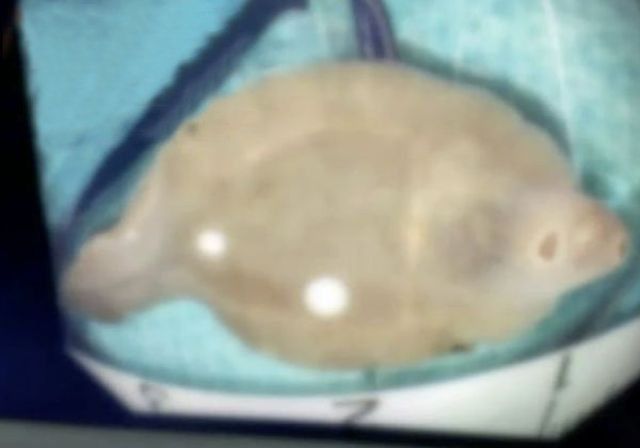Ettodata reported, a woman from Quanzhou, Guilin, Guangxi, recently visited the 924 Military Hospital (China) Gastroenterology Department due to unexplained upper abdominal pain and nausea. After the diagnosis and treatment of ERCP, the doctor was surprised to find that 1/3 of the woman’s liver had been eaten by parasites, and the bile ducts inside and outside the liver were also damaged, seriously injured.

Corroded woman’s heart photo
Doctors soon found the parasite in the woman’s liver. This parasite is shaped like a fish, measuring about 3.5 x 2.0 cm, after being removed it still swims and still has terrible destructive power.
Dr. Ha Wei, deputy chief physician of the Department of Hepatobiliary and Pancreatic Surgery, explained: What was expelled from the woman’s body was not a normal large liver fluke, but several times the size of a large liver fluke. After finding out, the woman likes to eat salads and raw vegetables, this is the main reason why she has liver worms. Doctors warn to eat less of these foods.

Liver worms are removed from a woman’s body
Doctor Hua Wei said that the liver fluke larvae pass through the small intestine and then enter the abdominal cavity, and eventually reach the liver. As it grows, it forms a local mass that eats away at the liver, even blocking the blood vessels or bile ducts in the liver, causing a series of dangerous symptoms.
Heartworm disease?
Human liver fluke is a parasitic infection caused by two agents, Fasciola hepattca and Fasciola gigantlca. It has flat leaves 20-30mm long, 8-13mm wide. These worms are mainly parasites of herbivores such as buffalo, cattle, sheep, goats…and can cause disease in humans.
Large liver flukes are parasitic in the hepatobiliary system, they lay eggs in the bile into the intestine and in the feces into the environment. In the environment, the eggs fall into the water, incubate hairy larvae into suitable snails (Lymnae snails) and develop from 20-30 days into tail larvae. After a while, the tail larvae swim freely in the water and attach to aquatic plants such as celery, kale, watercress, coriander…

Warning must limit eating raw vegetables
Humans and animals that eat (live) aquatic plants or drink water containing large liver fluke larvae will become infected with liver flukes. The lifespan of a human heartworm is 9-13.5 years.
Thus, pathogens from herbivores and sick people contaminate vegetables, grass and water sources by large liver fluke larvae and create a closed cycle.
Clinical symptoms
– Fatigue, anorexia, weight loss.
Fever: fever is erratic, can be high fever, chills or fever is only temporary and then goes away on its own, sometimes prolonged fever.
– Anemia: blue skin, pale mucous membranes often occur in cases of prolonged infection, especially in children.
– Abdominal pain: pain in the right lower quadrant radiating to the back or epigastrium – nasolabial. Pain is non-specific, can be dull, sometimes severe, sometimes without abdominal pain.
– There is a feeling of fullness in the stomach, indigestion, indigestion, nausea.
at Blogtuan.info – Source: Eva.vn – Read the original article here


